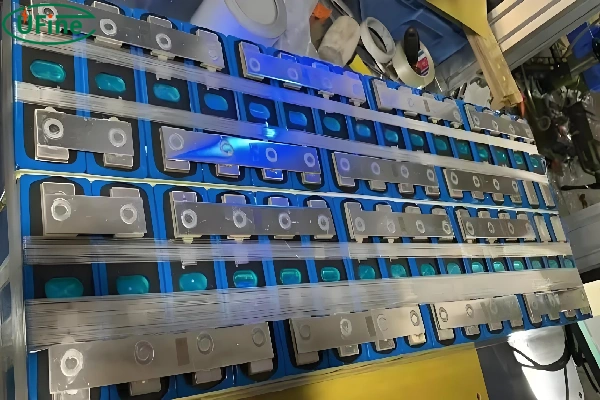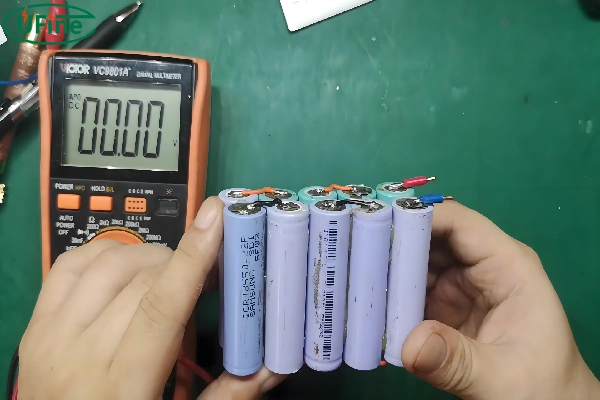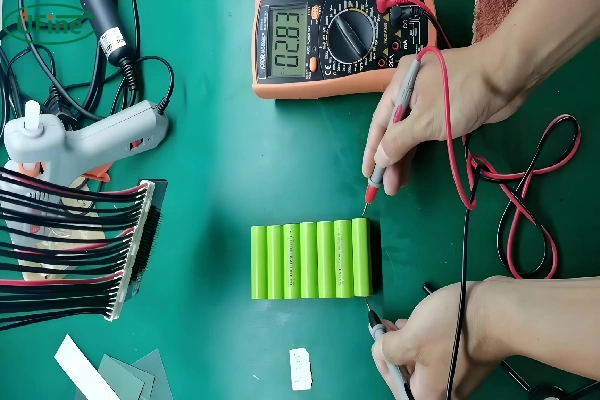Lithium batteries power many of our modern devices, from smartphones to electric vehicles. Despite their efficiency and reliability, they can experience various failures over time. Understanding these common issues, their causes, how to diagnose and fix them, and how to maintain your batteries properly can help you get the most out of your lithium batteries and keep your devices running smoothly.

Part 1. Common failures of lithium batteries
Lithium batteries can encounter several types of failures, which can affect their performance and safety. Here are some of the most prevalent issues:
- Capacity Loss: Over time, the battery’s ability to hold a charge diminishes, resulting in shorter usage times.
- Swelling: The battery casing may swell due to gas buildup from chemical reactions within the battery.
- Overheating: The battery becomes excessively hot during charging or use, indicating internal issues.
- Short Circuit: An internal short circuit can cause the battery to fail suddenly.
- Voltage Drop: The battery’s voltage decreases significantly, leading to poor performance.
- Charging Issues: The battery may not charge fully, take longer to charge, or fail to charge altogether.
Part 2. What causes li ion battery failure?
Several factors can contribute to the failure of lithium batteries. Understanding these causes can help in preventing and managing battery issues:
- Aging: Like all batteries, lithium batteries degrade over time. The chemical reactions that generate power eventually reduce their effectiveness.
- Overcharging: Constant overcharging can damage the battery’s internal structure, leading to reduced lifespan and performance.
- Physical Damage: Dropping or mishandling the battery can cause internal components to break or short circuit.
- High Temperatures: Exposure to high temperatures can accelerate the degradation of the battery’s materials.
- Manufacturing Defects: Flaws during the production process can lead to premature battery failures.
- Deep Discharges: Frequently discharging the battery to very low levels can stress the battery and shorten its lifespan.
Part 3. What are the signs of lithium battery failure?
Recognizing the signs of lithium battery failure early can prevent further damage and potential safety hazards. Here are some common signs:
- Rapid Discharge: The battery depletes quickly despite being fully charged.
- Swelling: The battery casing looks bloated or swollen, indicating internal gas buildup.
- Excessive Heat: The battery becomes unusually hot during charging or use.
- Slow Charging: The battery takes much longer to charge than usual.
- Device Shutdowns: The device powered by the battery shuts down unexpectedly, even when the battery indicates a sufficient charge.
- Voltage Irregularities: The voltage output of the battery is inconsistent or lower than expected.
Part 4. How to check lithium battery failure?
Diagnosing lithium battery issues involves several steps. These methods can help you determine if your battery is failing:
- Visual Inspection: Look for visible signs of damage, swelling, or leakage. A swollen battery indicates internal gas buildup, which can be dangerous.
- Voltage Test: Use a multimeter to measure the battery’s voltage. A significant drop from its rated voltage can indicate a problem.
- Capacity Test: Fully charge the battery, then use it until it is depleted while measuring the capacity. If the capacity is significantly lower than its original rating, the battery may be failing.
- Heat Test: Observe the battery’s temperature during charging and use. Excessive heat can signal internal issues.
- Performance Test: Evaluate how well the battery powers the device. If the device shuts down quickly or performs poorly, the battery might be failing.
Par 5. What should I do if the lithium battery fails?
If you determine that your lithium battery has failed, here are the steps you should take:
- Stop Using the Battery: Immediately stop using the battery to prevent further damage or safety risks.
- Dispose of Properly: Follow local regulations for disposing of lithium batteries. Many places have designated recycling centers.
- Replace with a New Battery: Purchase a new battery that is compatible with your device.
- Consult a Professional: If you are unsure about the battery’s condition or how to dispose of it, consult a professional for advice.
Part 6. How to fix a faulty lithium battery?
Fixing a faulty lithium battery can be challenging, but several methods can help improve its performance or restore some functionality:
- Balancing Cells: For multi-cell batteries, ensuring that all cells are balanced and charged evenly can improve performance and lifespan.
- Reconditioning: Special chargers can sometimes recondition batteries, restoring some of their lost capacity and performance.
- Cleaning Contacts: Dirty or corroded contacts can impair the battery’s performance. Cleaning them with a contact cleaner can help.
- Firmware Updates: Updating the device’s firmware can sometimes resolve battery-related issues by optimizing power management.
- Professional Repair: For severe issues, it might be best to seek professional repair or consider replacing the battery entirely.
Part 7. Lithium battery maintenance tips
Proper maintenance can significantly extend the life of your lithium batteries. Here are some essential tips:
- Avoid Overcharging: Disconnect the charger once the battery is fully charged to prevent overcharging.
- Use Appropriate Chargers: Always use chargers that are recommended by the battery manufacturer to ensure compatibility and safety.
- Store Properly: Store batteries in a cool, dry place at around 50% charge to prevent capacity loss.
- Avoid Extreme Temperatures: Keep the battery away from high heat and freezing temperatures to prevent damage.
- Regular Use: Regularly using the battery can help maintain its capacity and performance.
- Periodic Checks: Regularly check the battery for signs of wear, damage, or performance issues and address them promptly.
Part 8. Conclusion
Understanding the common failures of lithium batteries, their causes, and how to diagnose and fix them can help you extend the life and performance of your batteries. Regular maintenance and proper handling are key to preventing issues and ensuring that your devices remain functional. By following these tips and guidelines, you can maximize the efficiency and longevity of your lithium batteries.
Related Tags:
More Articles

How to Choose the Best Floor Scrubber Battery for Commercial Cleaning?
Selecting the ideal floor scrubber battery ensures a long runtime, rapid charging, and minimal maintenance for efficient commercial cleaning operations.
Battery for Blower vs Battery for Leaf Vacuum: Which One Should You Choose?
Battery for blower vs leaf vacuum—learn the key differences in power, fit, and runtime to choose the right battery for your outdoor tool needs.
How to Choose the Right Battery for Blower?
Choosing the right blower battery? Consider voltage, capacity, chemistry & usage. This guide helps match the best battery for peak performance.
How to Choose the Best Insulated Battery Box for Lithium Batteries?
Choosing the Best Insulated Battery Box for Lithium Batteries? Discover key factors such as size, material, and safety for optimal protection and performance.
7 Critical Elements on a Lithium Battery Shipping Label
What must be on a lithium battery shipping label? Learn 7 key elements to ensure safety, legal compliance, and correct handling across all transport modes.





